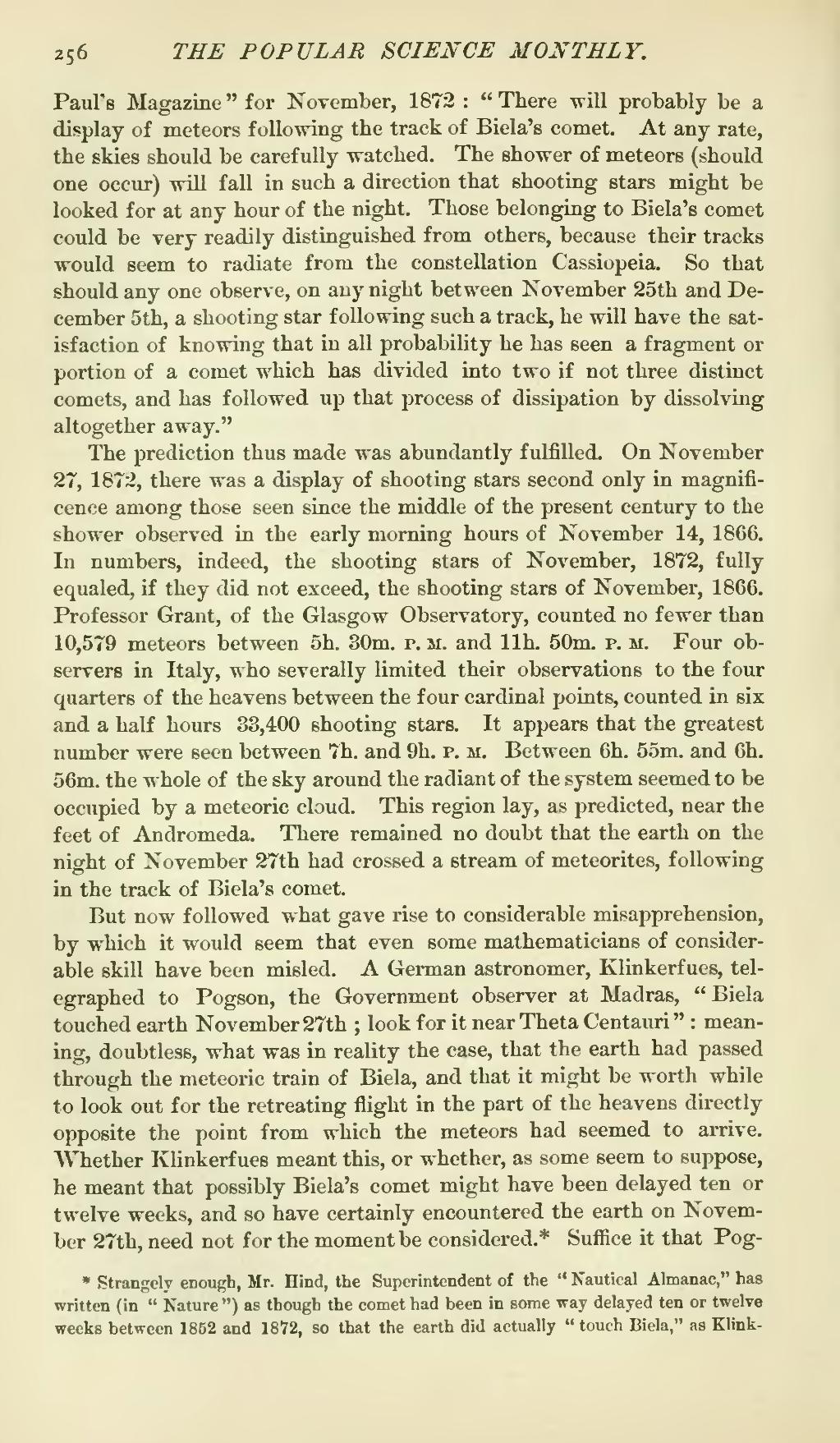Paul's Magazine" for November, 1872: "There will probably be a display of meteors following the track of Biela's comet. At any rate, the skies should be carefully watched. The shower of meteors (should one occur) will fall in such a direction that shooting stars might be looked for at any hour of the night. Those belonging to Biela's comet could be very readily distinguished from others, because their tracks would seem to radiate from the constellation Cassiopeia. So that should any one observe, on any night between November 25th and December 5th, a shooting star following such a track, he will have the satisfaction of knowing that in all probability he has seen a fragment or portion of a comet which has divided into two if not three distinct comets, and has followed up that process of dissipation by dissolving altogether away."
The prediction thus made was abundantly fulfilled. On November 27, 1872, there was a display of shooting stars second only in magnificence among those seen since the middle of the present century to the shower observed in the early morning hours of November 14, 1866. In numbers, indeed, the shooting stars of November, 1872, fully equaled, if they did not exceed, the shooting stars of November, 1866. Professor Grant, of the Glasgow Observatory, counted no fewer than 10,579 meteors between 5h. 30m. p. m. and 11h. 50m. p. m. Four observers in Italy, who severally limited their observations to the four quarters of the heavens between the four cardinal points, counted in six and a half hours 33,400 shooting stars. It appears that the greatest number were seen between 7h. and 9h. p. m. Between 6h. 55m. and 6h. 56m. the whole of the sky around the radiant of the system seemed to be occupied by a meteoric cloud. This region lay, as predicted, near the feet of Andromeda. There remained no doubt that the earth on the night of November 27th had crossed a stream of meteorites, following in the track of Biela's comet.
But now followed what gave rise to considerable misapprehension, by which it would seem that even some mathematicians of considerable skill have been misled. A German astronomer, Klinkerfues, telegraphed to Pogson, the Government observer at Madras, "Biela touched earth November 27th; look for it near Theta Centauri": meaning, doubtless, what was in reality the case, that the earth had passed through the meteoric train of Biela, and that it might be worth while to look out for the retreating flight in the part of the heavens directly opposite the point from which the meteors had seemed to arrive. Whether Klinkerfues meant this, or whether, as some seem to suppose, he meant that possibly Biela's comet might have been delayed ten or twelve weeks, and so have certainly encountered the earth on November 27th, need not for the moment be considered.[1] Suffice it that Pog-
- ↑ Strangely enough, Mr. Hind, the Superintendent of the "Nautical Almanac," has written (in "Nature") as though the comet had been in some way delayed ten or twelve weeks between 1852 and 1872, so that the earth did actually "touch Biela," as Klink-
